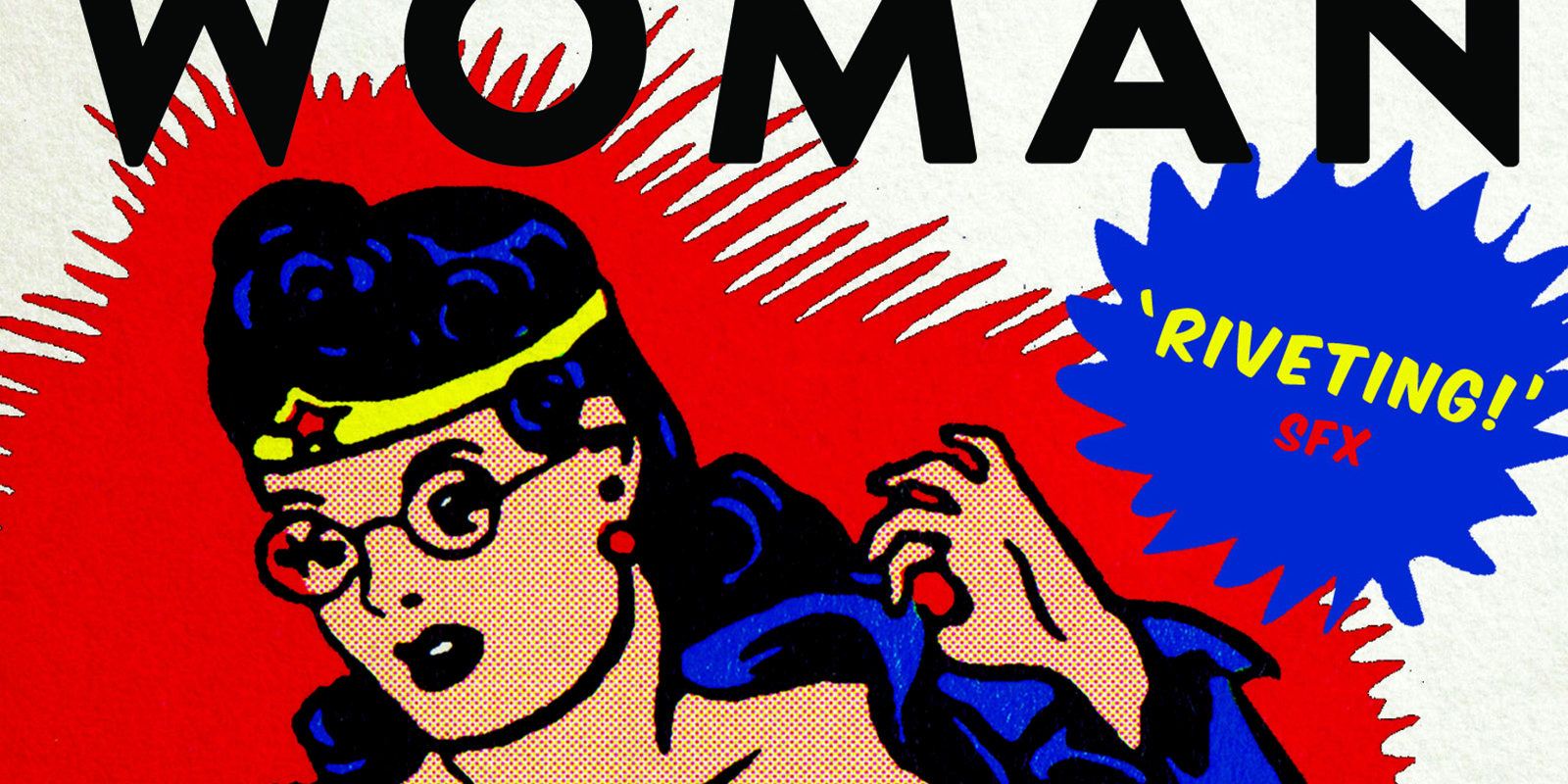
The Secret History of Wonder Woman
Jill Lepore
Wonder Woman is the most popular female comic-book superhero of all time. Aside from Superman and Batman, no other comic-book charac- ter has lasted as long. Like every other superhero, Wonder Woman has a secret identity. Unlike every other superhero, she also has a secret history.
Superman first bounded over tall buildings in 1938. Batman began lurking in the shadows in 1939. Wonder Woman landed in her invis- ible plane in 1941. She was an Amazon from an island of women who had lived apart from men since the time of ancient Greece. She came to the United States to fight for peace, justice, and women’s rights. She had golden bracelets; she could stop bullets. She had a magic lasso; anyone she roped had to tell the truth. To hide her identity, she disguised herself as a secretary named Diana Prince; she worked for U.S. military intelligence. Her gods were female, and so were her curses. “Great Hera!” she cried. “Suffering Sappho!” she swore. She was meant to be the strongest, smartest, bravest woman the world had ever seen. She looked like a pin-up girl. In 1942, she was recruited to the Justice Society of America, joining Superman, Batman, the Flash, and Green Lantern; she was the only woman. She wore a golden tiara, a red bustier, blue underpants, and knee-high, red leather boots. She was a little slinky; she was very kinky.
Over seven decades, across continents and oceans, Wonder Woman has never been out of print. Her fans number in the millions. Generations of girls have carried their sandwiches to school in Wonder Woman lunch boxes. But not even Wonder Woman’s most ardent followers know the true story of her origins. She’s as secret as a heart.
In an episode from 1944, a newspaper editor named Brown, desper- ate to discover Wonder Woman’s secret past, assigns a team of report- ers to chase her down. She easily escapes them, outrunning their car in her high-heeled boots, leaping like an antelope. Brown, gone half mad, suffers a breakdown and is committed to a hospital. Wonder Woman, taking pity on him, puts on a nurse’s uniform and brings him a scroll. “This parchment seems to be the history of that girl you call ‘Wonder Woman’!” she tells him. “A strange, veiled woman left it with me.” Brown leaps out of bed and, not stopping to change out of his hospital johnny, races back to the city desk, where he cries out, parchment in hand, “Stop the presses! I’ve got the history of Wonder Woman!”
Brown’s nuts; he hasn’t really got the history of Wonder Woman. All he’s got is her Amazonian legend.
This book has got something else. The Secret History of Wonder Woman is the result of years of research in dozens of libraries, archives, and collections, including the private papers of Wonder Woman’s creator, William Moulton Marston—papers that have never been seen by anyone outside of Marston’s family. I read the published material first: newspapers and magazines, trade journals and scientific papers, comic strips and comic books. Then I went to the archives. I didn’t find anything written on parchment; I found something better: thousands of pages of documents, manuscripts and typescripts, pho- tographs and drawings, letters and postcards, criminal court records, notes scribbled in the margins of books, legal briefs, medical records, unpublished memoirs, story drafts, sketches, student transcripts, birth certificates, adoption papers, military records, family albums, scrap- books, lecture notes, FBI files, movie scripts, the carefully typed meet- ing minutes of a sex cult, and tiny diaries written in secret code. Stop the presses. I’ve got the history of Wonder Woman.
Wonder Woman isn’t only an Amazonian princess with badass boots. She’s the missing link in a chain of events that begins with the woman suffrage campaigns of the 1910s and ends with the trou- bled place of feminism fully a century later. Feminism made Wonder Woman. And then Wonder Woman remade feminism, which hasn’t been altogether good for feminism. Superheroes, who are supposed to be better than everyone else, are excellent at clobbering people; they’re lousy at fighting for equality.
But Wonder Woman is no ordinary comic-book superhero. The secrets this book reveals and the story it tells place Wonder Woman not only within the history of comic books and superheroes but also at the very center of the histories of science, law, and politics. Super- man owes a debt to science fiction, Batman to the hard-boiled detec- tive. Wonder Woman’s debt is to the fictional feminist utopia and to the struggle for women’s rights. Her origins lie in William Moulton Marston’s past, and in the lives of the women he loved; they created Wonder Woman, too. Wonder Woman is no ordinary comic-book character because Marston was no ordinary man and his family was no ordinary family. Marston was a polymath. He was an expert in deception: he invented the lie detector test. He led a secret life: he had four children by two women; they lived together under one roof. They were masters of the art of concealment.
Their favorite hiding place was the comics they produced. Marston was a scholar, a professor, and a scientist; Wonder Woman began on a college campus, in a lecture hall, and in a laboratory. Marston was a lawyer and a filmmaker; Wonder Woman began in a courthouse and a movie theater. The women Marston loved were suffragists, femi- nists, and birth control advocates. Wonder Woman began in a protest march, a bedroom, and a birth control clinic. The red bustier isn’t the half of it. Unknown to the world, Margaret Sanger, one of the most influential feminists of the twentieth century, was part of Marston’s family.
Wonder Woman has been fighting for women’s rights for a very long time, battles hard fought but never won. This is the story of her origins—the stuff of wonders, and of lies.